The Point Reyes National Seashore makes for an excellent day trip from San Francisco, particularly in the fall months. The Tule Elk (pronounced Too-Lee) will be in the middle of their rutting season, vying for mating partners, and grey whales will be passing by the peninsula on their winter migration route. All of this set against the peninsula’s granite bluffs overlooking the coast, with barely a tree to obscure your view.
Fog is an issue. No exaggeration, more than 70 ships have sunk here due to the dense fog. Before setting out for your journey, be sure to check the fog conditions: Weather Channel Interactive Map. (Click on Clouds rather than Radar to get a sense of current fog conditions.)
This day trip takes you through Point Reyes Station, for a visit to Cowgirl Creamery, on your way to Pierce Point Ranch on Point Reyes. From there, you’ll hike and ogle the hundreds of tule elk that live on the reserve. Then, a stop in Inverness at a road-side barbecue station on Tomales Bay for fresh barbecued oysters, then it’s on to Sausalito’s Fish Restaurant for dinner. It is a deeply rewarding day, hiking and eating the best the Northern California has to offer.
On the Road: A trip to Cowgirl Creamery and Point Reyes’ Tule Elk Reserve
Recommended Itinerary(10 hours, 110 driving miles, 6 hiking miles):
1. Drive to Point Reyes Station
2. Pick up picnic supplies at Tomales Bay Foods, flagship store for Cowgirl Creamery
3. Drive to Pierce Point Ranch in the Point Reyes National Seashore
4. Hike along the Tamalpais Ridge
5. Enjoy a picnic overlooking the Pacific Ocean and Tomales Bay
6. Head back to Pierce Point Ranch
7. Stop in Inverness for Barbecue Oysters at a roadside stand on Tomales Bay
8. Drive to Sausalito’s Fish Restaurant
What You’ll Need to Bring:
1. A Car — Point Reyes is only accessible by car.
2. Layers. If you think you have too many layers, add a puffy coat.
3. Optional: binoculars
4. Hiking sneakers
5. A change of clothes, depending on evening dinner plans
6. Napkins, knives, picnic gear, etc.
7. Water bottles
1. Drive to Point Reyes Station
We had looked at the weather forecast rather than current fog conditions before we set out on our trip. As we drove north over the Golden Gate Bridge, the fog wasn’t exactly being coy. It was near white-out conditions. “Oh, huh”, we thought, “looks like the fog hasn’t burned off yet.”
Wind your way through the hills and marinas of Marin County and take exit 450B to Sir Francis Drake Boulevard. You’ll be on this commercial road for the next 20 miles, passing through the towns of Greenbrae, San Anselmo, and Fairfax.
For a seemingly desolate stretch of coastal land, Point Reyes has quite a history. And even better than history, it has a maritime mystery.
This story revolves around Sir Francis Drake, who led England’s first circumnavigation of the globe between 1577 and 1579, who took some time off to pillage and plunder Spanish ships off the coast of South America. You might be thinking, “OH, so he must have discovered Marin County” or “he colonized California.” Not even close.
Post-pillaging, missing 5 ships, and hauling a small Spanish boat behind him, he puttered into a North American bay on a cold, June day to fix his last remaining boat. In true British fashion, he “conquered” the land and raised a flag for the Queen. A month later, crew fixed and fed, they sailed off for Portuguese conquests in Indonesia.
I just spent a solid two hours going down the Sir Francis Drake Maritime Mystery rabbit hole – “analyzing his navigation records from 36 other confirmed stops, attributing a consistent rate of error to the navigational instruments available to him in 1577, in conjunction with our above thesis that Queen Elizabeth ordered that the Official Record be rewritten so as to mislead future Spanish expeditions, I hereby believe that Sir Francis Drake must have stopped at a bay at 38 degrees 2 minutes and NOT 38 degrees 12 minutes.” The maritime mystery has been going on for centuries – his records were so poor that bays all up and down the Pacific Coast are contenders.
This hasn’t stopped the British and Americans from attributing San Francisco’s founding to him, which I’m sure centuries worth of Spanish settlers would have something to say about.
As I’ve pointed out before, the Spanish discovered Monterey and Point Reyes more than a century before they discovered San Francisco Bay. Unlike the C-shaped Monterey Bay or Drakes Bay, you have to go through a narrow channel (the Golden Gate) to see San Francisco Bay, and it’s a fog blanketed, narrow channel at that. Spanish explorers passed right by it several times, and only discovered San Francisco Bay on a land expedition, when Gaspar de Portola happened upon it while looking for Monterey Bay. A Franciscan friar, along on the expedition, named the bay “San Francisco” after Saint Francis of Assisi. Six years later, in 1775, the Spanish sent another expedition to settle San Francisco Bay.
When the British and Americans filed into San Francisco Bay during the Gold Rush a century later, the thinking went something along the lines of, “Oh, how lovely, the Spanish named their city in honor of Sir Francis Drake, for discovering this great bay for them.”
Realizing a while later that that wasn’t right, the theory changed to, “Isn’t it lovely that Portola discovered San Francisco bay, while he was searching for Sir Francis Drake’s wonderful bay?” This theory still has some weight, despite the fact that Portola’s diaries have been published, and even translated into English, and he was clearly looking for Monterey Bay, which the Spanish had repeatedly visited.
SO. The real story is that in 1577, Sir Francis Drake left Plymouth on his way to pillage Portuguese and Spanish ships on his way around the world. He lost five ships before dragging his last remaining ship into a bay somewhere for repairs. Despite not knowing where he was, he declared the land property of Queen Elizabeth. He stayed 4 weeks and left, leaving no trace that he was ever there. The End.
History is written by the victors, though, and so we now have Sir Francis Drake Boulevard, passing in front of Sir Francis Drake High School, on our way to Sir Francis Drake’s Bay.
As you drive along, Sir Francis Drake Boulevard goes from a suburban landscape to redwood forest. The road whips around giant redwood pillars and rustic cabins. Soon, you’ll exit into the grasslands of the Marin Coast. At the fork in the road, turn right to merge with Rt 1. Follow signs for Point Reyes Station, just 2 miles up Rt 1.
2. Have lunch or shop for picnic supplies in Point Reyes Station
Point Reyes Station is a one-stoplight town with a national pedigree. It’s the home to Tomales Bay Foods, the flagship store for Cowgirl Creamery. I’d recommend either having lunch in town or venturing to Tomales Bay Foods for picnic supplies.
Point Reyes Station has the feel of a mountain village — bohemian/western architecture nestled in behind a wall of redwood trees. As you come into town, park anywhere. The whole town is only a couple blocks. There are public restrooms available on Mesa Rd, which you can access by walking through the feed barn on A street.
If you’re having lunch, I’d recommend The Station House Café, right off Rt 1 on A street. It serves excellent California bistro fare with the fresh ingredients this part of Northern California is known for. It also has a ridiculously beautiful back patio. Or, stop by Toby’s Coffee Bar just inside the feed lot, or get some pastries at Bovine Bakery across the street.
>
Tomales Bay Foods is around the corner on 4th street. It sells the full Cowgirl Creamery line – Mt Tam, Red Hawk, Pierce Pt, and Devil’s Gulch — including their fresh cheeses that you can only buy in the Bay Area. The store also sells fresh fruit, sandwiches, jams, and bread from Brick Maiden.
(If you are planning on a picnic at the Tule Elk Reserve, I should warn you that the Reserve is full of stinging nettle and elk droppings. You’ll most likely eat your picnic perched on one of the boulders that line the hiking path. If it’s a rare warm day, though, you could also take your picnic down to one of the secluded beaches.)
3. Drive to Pierce Point Ranch in the Point Reyes Tule Elk Reserve
Back in your car, make a u-turn to drive back down Rt 1. In a quarter mile, turn right onto Sir Francis Drake Boulevard. The road meanders through the small town of Inverness and then turns into a small rural highway on the coast of Tomales Bay. As we passed through, we saw lots of folks parking on the side of the road and heading to the beaches on Tomales Bay (How can you tell people are heading to the beach in Northern California? They’re wearing their finest flannel beach cover up. Badum bum.) After 6.5 miles, veer right onto Pierce Rd.
Point Reyes is a 53,000-acre, granite triangle of a peninsula. In a unique government partnership with the grandfathered-in dairy ranches, it is protected federal land as well as grazing land. As your car swoops this way and that, the vista is of black cows, crumbling wooden fences, golden grassy hills, and endless sky. If you catch a glimpse of a ranch sign along the way, you will note that they are all lettered and dated from the mid 1800’s. Here, you have the ranches of the original Spanish settlers.
The entrance to the Tule Elk Reserve will be a few miles ahead. We were greeted with a herd of about 10 to 15 elk just off the road as soon as we entered the park. Our expectations were peaked – “so this is how it’s gonna be!”
Drive a little further down the road and park at Pierce Point Ranch, a complex of 18 white clapboard buildings in various states of decline in an otherwise barren landscape. (There are park restrooms just down the road. I made an outhouse joke on the way there; that turned out not to be ha-ha funny. The park bathrooms on the south end of Point Reyes are MUCH nicer, but that’s a solid half hour to hour drive from Pierce Point Ranch.)
4. Hike along the Tamalpais Ridge
The hike begins just to the east of Pierce Point Ranch– the path is a cleared, sandy road. Again, as soon as we started on our hike, we saw 4 female elk running along the crest. Expectations: still at an all time high. As you crest over that first hill, the whole ragged granite coastline comes into view. This is what the hike will look like the rest of the way. Through the sea mist and fog, we could just make out the crashing waves and granite cliffs of Tamalpais Point, all appearing in varying shades of white. This would be absolutely stunning on a clear day.
We were still jumpy that next first mile, just waiting for another herd to make an appearance. It took us a mile or so of hiking to realize that the herd we came across at the entrance was an anomaly. All of the sudden brake-lights and people jumping out of cars made a lot more sense.
Midway through the hike, we came upon a national park volunteer in khaki’s, hiking shoes, and a green vest. She had been staking out a “harem” all morning, and told us that they had had a very exciting morning. Harem is the actual term elk experts use to describe a female herd. Female herds are “tended to” by only one male per mating season. “Rutting season” is when the male elk battle each other for control of a harem. The males that don’t manage to take on a harem, live the rest of the year like “frat boys.” (The park has resorted to giving birth control to the female elk, in an attempt to limit the population. Frat boys and harems, indeed.)
Through the use of her high-powered binoculars, we could just see the harem, miles in the distance. Three males were a little closer, circling and intimidatingly bellowing at each other. She had seen two males lock antlers earlier in the day. Not afraid of a little anthropomorphizing ourselves, we noted that the ladies of the harem couldn’t care less about the fighting frat boys.
We continued on our hike until we could see all of Tamalpais Point, where the Pacific meets Tomales Bay. With no further valleys or trees to obscure our view, it was easy to see that there weren’t any more elk ahead . It seemed as good a time as any to find a rock and have our picnic.
5. Enjoy a picnic overlooking Tamalpais Point
As I mentioned before, you’ll have to find a boulder to picnic on. The terrain is a landmine of purple-blossomed stinging nettle and a variety of elk, deer, and mountain lion droppings. I’ve never seen so much scat.
Our picnic consisted of Cowgirl Creamery’s Inverness cheese, a mild goat cheese, a plu-ot, locally sourced salami, a loaf of Brickmaiden bread, a slice of Cowgirl creamery’s membrillo, and potato chips. Yes, our diet here in North California is pretty much a caricature of itself at this point.
The gooey and mold-flecked Inverness cheese was earthy. And I like strong, earthy cheeses. It was so earthy that I started wondering if it was supposed to taste like that.
Our lunchtime conversation centered on the horse caravan that parked right next to us at the entrance. Me, Eastern U.S. born and raised, I couldn’t imagine bringing a hiking stick into a public park without a citation let alone a half-ton animal. My husband, Western U.S. born and raised, didn’t see what the problem was: “What do you think a horse might do exactly?” “Who knows? Horses are skittish. They could, like, get scared and stampede or something.” “You think a horse is going to stampede on the trail?” “You never know! A horse could get scared and stampede…it could stampede over a child’s face. And then what?” He was too busy laughing at this point to rebut anything else I had to say.
The fog started coming in with a vengeance during our lunch – which meant that it apparently hadn’t been coming in with a vengeance before. The air felt thick with sea and the sun no longer provided any warmth. We decided to pack it in and head back for the car.
6. Head back to Pierce Point Ranch
Up to this point, we felt pretty good about our elk-viewing. On our climb back, we passed several groups of people, all of whom asked us if we had seen any elk closer to the point. “Nope, the last elk we saw were further up the trail.” “Yeah, we saw those too. But there aren’t any more?” We pitied them – they probably had missed out on all the elk we’d seen, poor hikers.
Then we crested the hill.
Where we’d previously seen two female elk eating grass, there were now a herd of 20 to 25 animals less than 20ft away, including nursing babies and two battling males. “Wait, wait, those people just left this? They think they’re going to see more? Than this? Tell the people on your website that if they see 20 elk, they just need to pull up a chair because it’s not getting any better.”
And so we sat for a half hour, watching the herd. Oddly, the line of humans staring and snapping photos barely registered with them.
The keeper of the harem successfully bellowed his way to victory against his intruder. The loser elk slowly stalking away. He didn’t really put up much of a fight. Another point for Darwin, I guess.
Slowly, slowly, the keeper started nipping at all the women’s hind quarters – he was herding them off the site. As they wandered off, we decided to go on with our day. The fog was rolling across our path in bursts. It felt a lot like walking up to a window air conditioner unit on blast. We hypothesized (rationalized, justified, hoped) that perhaps we’d seen so many elk because of the fog rather than in spite of it. If your interest is in survival and not pretty photos, a foggy hilltop in Northern California must be ideal, right? It’s like the lord’s natural air conditioning.
7. Stop for Barbecued Oysters in Inverness
You’ll take the same road out that you came in on – there’s only one road, so your options are limited.
The weather changed drastically as soon as we left Pierce Point Ranch. Unbeknownst to us, the Bay Area was having a glorious, blue-sparkling-water kind of day.
On our way back, we stopped at the Inverness Market, right on Tomalas Bay. I can’t pass up an opportunity for fresh Tomales Bay oysters, and we needed a chance to bask in some sunlight, like lizards splayed out under a heat lamp. ($9.99 for a half dozen bbq’d oysters, pay inside and then hand the guy at the bbq grill your receipt.)
We grabbed our plate of oysters and sat down on chunk of sun-bleached driftwood on the beach. The bay is a deep turquoise blue, with chartreuse spears of grass swaying in the breeze. The gold hills of Marin County across the bay stretched on forever into the horizon.
There is not much better in life than sitting on a log on the side of Tomales Bay, eating freshly harvested and bbq’d oysters. The road side barbecue spot grills the oysters open-faced, shell down. They finish off each oyster with a light vinegary barbecue sauce. The oysters and barbecue sauce worked very well together, particularly since the sauce didn’t overpower the buttery ocean taste of the oysters. Absolutely delightful.
8. Drive on to Sausalito’s Fish Restaurant
You could make this into a much more adventurous day trip, with either a trip to Petaluma, a Russian River vineyard, or dinner in Bolinas. Our day was cut short by exhaustion and blisters.
We decided to drive back to Sausalito for a dinner at Fish. To get to Sausalito, head back on Sir Francis Drake Boulevard to Highway 101. Take exit 445A for Sausalito/Marin County. From Bridgway, turn onto Gate 5 Road. Fish will be two blocks away.
Fish is in the docks-and-warehouses section of Sausalito. The area looks industrial, but it seems to have been converted into artisan studios and workshops. Parking is free in front of Fish, but you might choose to park on the street and explore the surroundings, particularly the Heath Ceramics factory store across the street.
Readers might recognize this restaurant; it’s the same one we went to after our Marin Headlands’ hike. It really is just that good. We were again greeted by a line out the door. At Fish, you order at the counter, and the cashier gives you a number. A waiter delivers your dinner a little while later.
We perused a menu in line, as it got increasingly blustery outside. Groups lining up behind us started stalking the limited indoor tables like vultures. For a while, as we got closer to the front of the line, we were actually concerned that we’d have nowhere to eat our $60 dinner.
Don’t be fooled by the LL Bean wholesomeness of the locals. You’ll have to sharpen your elbows and leave any sense of decorum in the car, because it is 5:00pm in Penn Station and they just announced your train. Finding a seat here is blood sport.
It’s too bad, really, because the food is outstanding. Their crab rolls are still the best we’ve ever had – perfectly buttered and crispy rolls, fresh crab mixed with chives, perfectly cooked fries. You can taste how fresh the ingredients are.
After dinner, we were back on the road to San Francisco, well-fed and exhaustedly rehashing our elk stories. It’s days like these that remind you why it’s worth it to live here, fog and all.






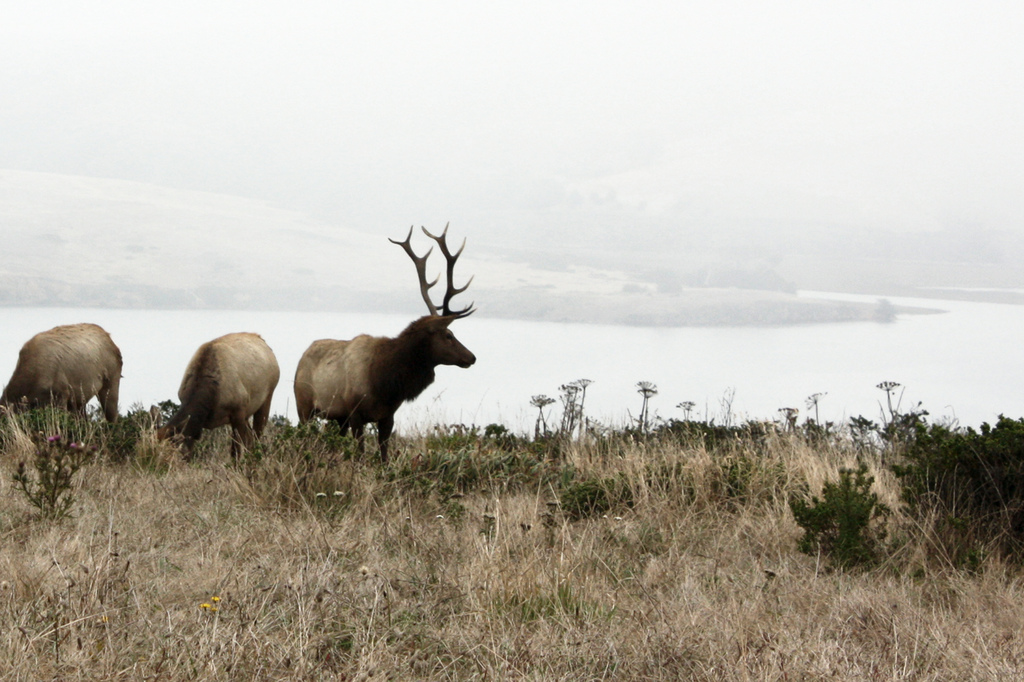
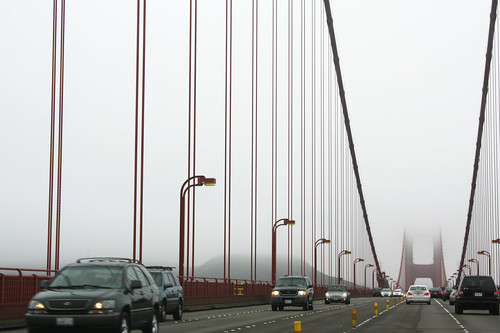
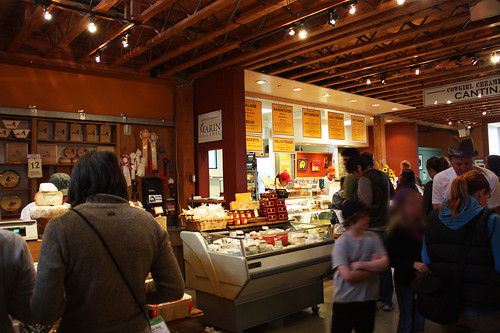



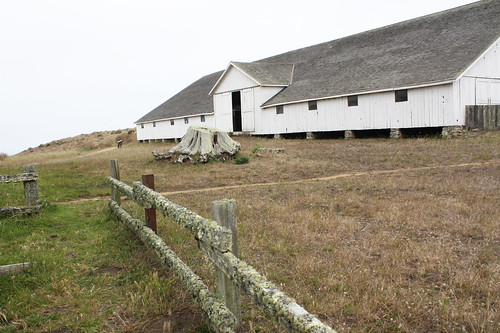
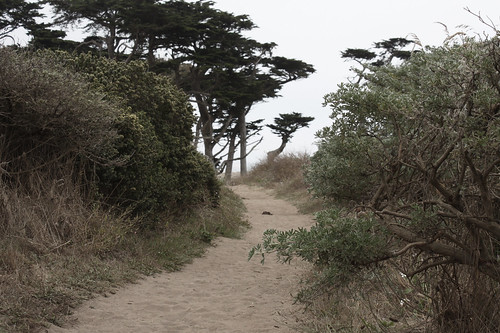
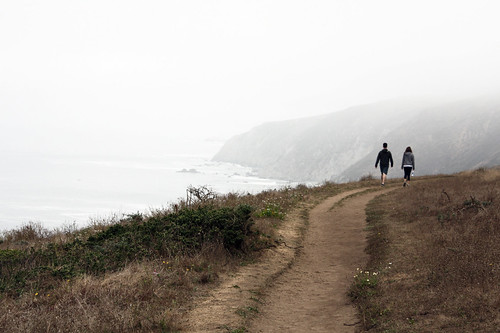
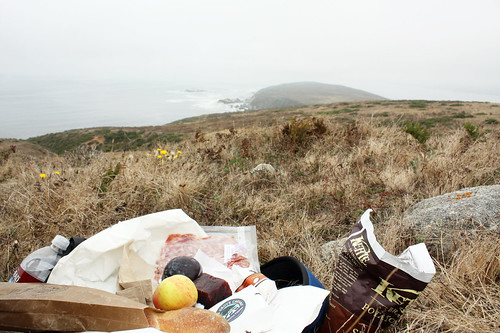
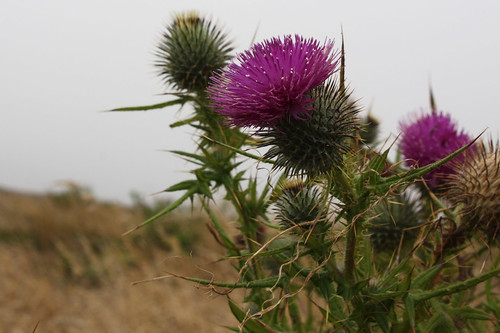
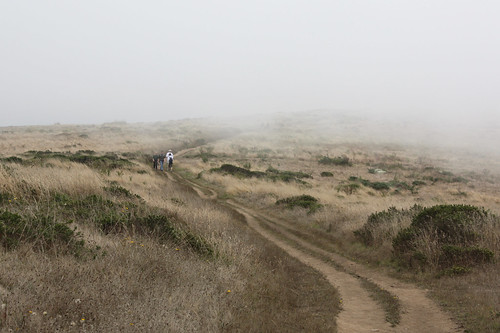

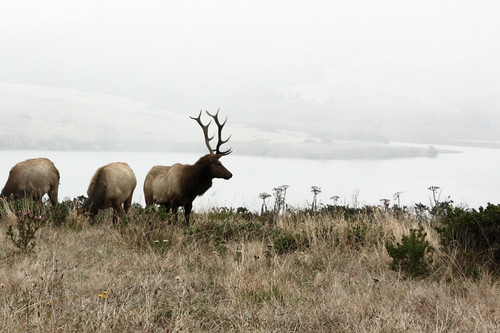
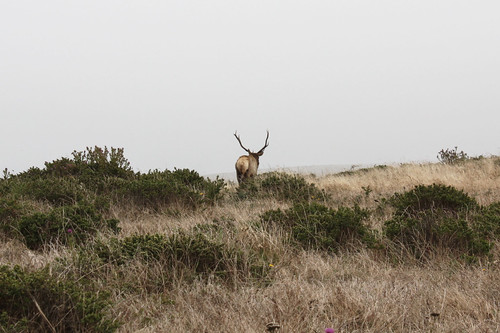


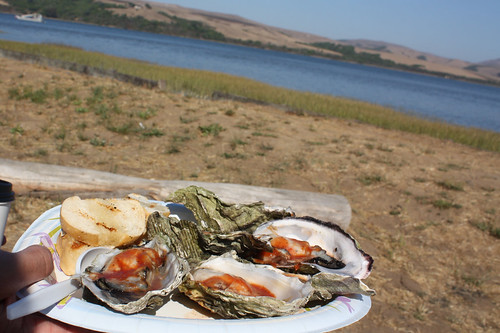

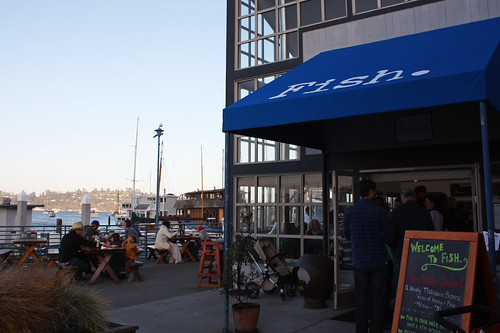

http://westcampusconnect.asu.edu/?p=225
Another Title…
I saw this really great post today….
1/6/2012 at 11:28 am
jasmyne
great post! i’m going to doing this itinerary this sunday!
7/9/2012 at 3:30 pm
Maria
Have an awesome time! Let us know how it goes!
7/9/2012 at 3:33 pm